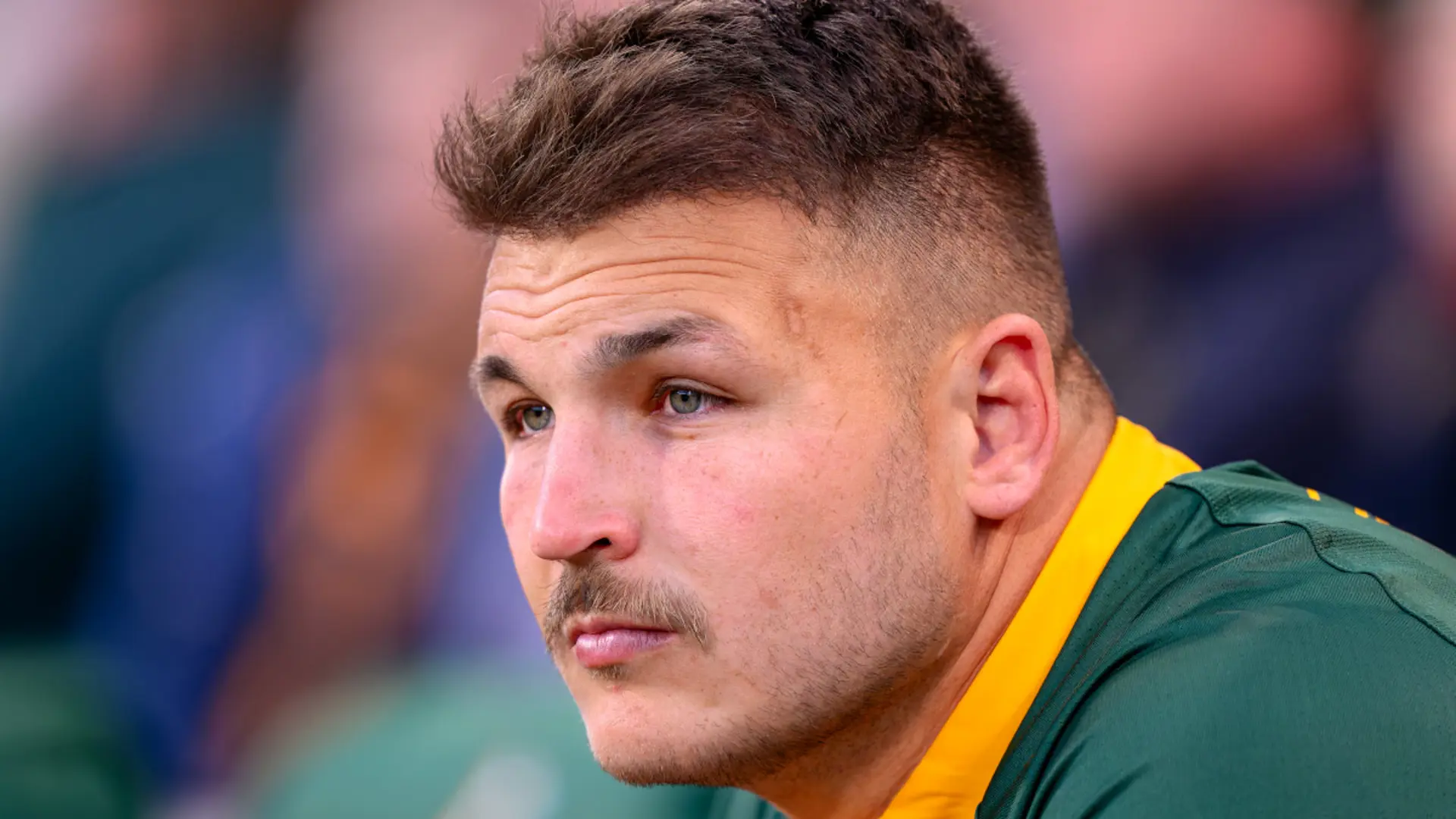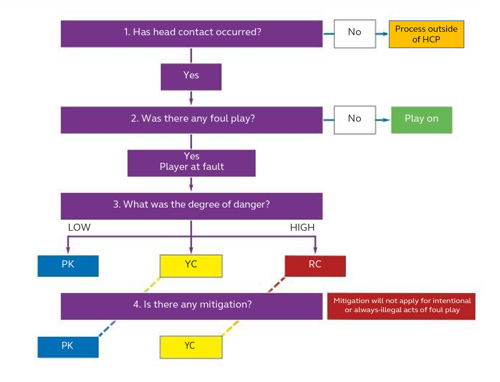TALKING POINT: Esterhuizen's red couldn't have been clearer - whether we like it or not

Two minutes into the Springboks-Portugal game, Andre Esterhuizen’s head clash with Jose Lima threatened to upend the game.
Minutes later, the TMO bunker upgraded it to a red card, and Esterhuizen will now face the consequences of a World Rugby disciplinary committee this week.
Do you agree with the decision to red card Andre Esterhuizen for this tackle?
pic.twitter.com/KaLDhK5fwf
Advertisement
It was around then that my phone started beeping, filled with messages from Bok fans enraged by the thought of the red card, blaming “a woman referee”, the system and World Rugby for making the game soft.
But they miss the point.
Any player playing professional rugby at the moment has to know the dangers of head-on-head contact, the fight that World Rugby is leading in trying to stamp it out and the consequences involved.
For the past four years, it hasn’t been a surprise if any head-on-head contact was given a red card - and no matter the game. From Sam Cane in the World Cup final to any arbitrary club game, the match officials are under order to ensure that head contact is punished. It is really that simple.
UNIFORMLY PUNISHED
While we all get emotional at times, and I’ve also been on record saying that any accidental head clash should not be a red, the officials are under instruction that it is uniformly punished to get it out of the game - period.
The problem Esterhuizen had was simply that while he wrapped his arms, he was upright in the tackle. That is the point that World Rugby has been trying to make for years now, players need to lower their tackle height in order not to have head clashes - either intentionally or accidentally.
Head-on-head contact in the tackle comes under Law 9 of the Laws of Rugby Union, which covers foul play. Law 9.11 dictates "Players must not do anything that is reckless or dangerous to others" and the referee is always entitled to issue a yellow or red card for any actions which contravene that.
Under the head contact decision-making process for officials issued by the global governing body in March 2021, considerations for whether foul play occurred in the case of head-on-head contact are if the actions of the player were intentional, reckless, and/or avoidable.
Mitigation in terms of issuing a red or yellow card as a sanction along with a penalty can be applied if there was a sudden or significant change in height or direction from the ball carrier, a late change in dynamics due to contact from another player, and the tackler making an effort to wrap their arms around the ball carrier.
In this case, while Esterhuizen did make an attempt to wrap, his tackling technique was clumsy and upright and thus didn’t give him any mitigation.

ZERO TOLERANCE
As the governing body clearly states: Player welfare drives World Rugby’s decision-making for zero tolerance of foul play, especially where head contact occurs. The focus must be on the actions of those involved, not the injury - the need for an HIA does not necessarily mean that there has been illegal head contact.
“The ‘power of choice’ for tacklers is crucial, especially as 72 per cent of head injuries occur in the tackle. There needs to be an understanding that tacklers stay up to allow them to ‘adjust and react’ - dropping quickly into the low tackle entry position - using their ‘eyes and feet’ to get their timing right. It is important that coaches and players continually develop safe tackling techniques in training.”
So while Esterhuizen will feel unlucky and many fans may be enraged, consider what the referee and bunker had to work with.
The first question is was there head contact involved? A clear yes.
The next question is if there was foul play? This becomes a bit more complicated but in asking this, they ask if the player was at fault. Being upright means that Esterhuizen would always lose that argument.
What was the degree of danger? That is the third and most important question. Whether you agree or not, the bunker decided the danger was high, the player was knocked out cold and had to be stretchered off.
MITIGATION?
And finally, there is the question of mitigation. In this case, there was no mitigation for the officials and hence it had to be a red card.
Afterwards, Jose Lima, the player involved, headed to hospital, underlining the seriousness of the injury with Simon Mannix lamenting his situation in the post-match press conference.
“South Africa are a really strong team across the board and my thoughts are just with Jose Lima who’s still in hospital tonight, these are unfortunate things in rugby,” the head coach said.
“It was a head-on-head clash and I really felt for the player who got the red card. It was an unfortunate incident for everybody involved.
“But our thoughts are firmly with Jose but fingers crossed that everything’s alright and prayers are with him.”
Then there was the crocodile roll of Kurt-Lee Arendse that brought out howls from fans, as he was yellow-carded for the incident.
The term refers to a move to remove an opponent over the ball at a breakdown by grabbing them around the torso and using their body weight to roll them to one side.
There have been several examples of this, and players have been warned that it has been outlawed as it has led to some serious injuries. Referees are under instruction to penalise this harshly.
Jack Willis was the first big name to be injured badly by this and one only has to look to Malcolm Marx against Ireland and a fractured tibia to know the consequences of the move.
NOT SURPRISED
So when Arendse did the crocodile roll, he knew it was wrong, and it could lead to injury, and shouldn’t have been surprised when he was carded for it.
The Portuguese player wasn’t injured, but the message is loud and clear that it won’t be allowed going forward.
Still, contrasting that with Caelan Doris’ crocodile roll on Malcolm Marx, where he falls awkwardly on Marx’s leg, and which can be argued to be accidental or deliberate, and it was a wonder that Doris - or James Ryan as the second player in the incident - weren’t given a much harsher sentence than Doris’ red.
Both were extremely lucky to get away with what they did. They will know that, and unfortunately, the inconsistency of rugby officials will again infuriate and confuse many.
But still, the message is clear on both accounts. Tackle low, don’t crocodile roll or face the consequences.
We can moan about unfairness and inconsistency, and on the second account, World Rugby still has a long way to go, but we can’t say players weren’t warned.
And that, for better or worse, is the bottom line.
Advertisement